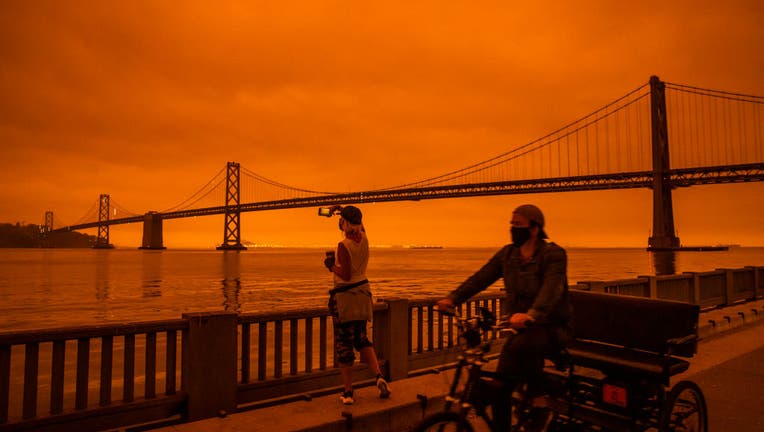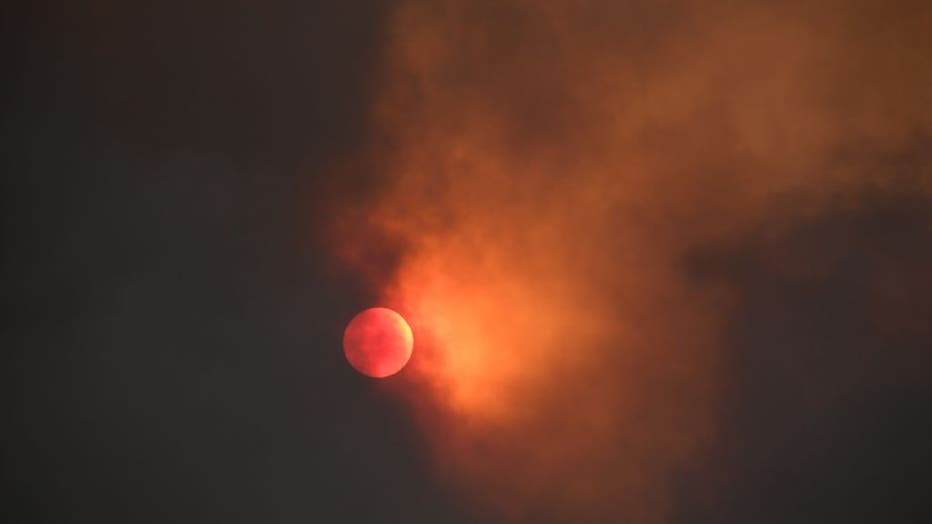Trapped heat intensifying wildfires, extending fire season

Wildfires burning across Northern California mixes with the marine layer, blanketing San Francisco in darkness and an orange glow on September 9, 2020 in San Francisco, California. (Photo by Philip Pacheco/Getty Images)
OAKLAND, Calif. - The Earth is now trapping twice as much heat as it was in 2005, according to a joint report from NOAA and NASA.
If this trend continues, our entire strategy of forest maintenance, firefighting, energy use and evacuation procedures will have to quickly transform to keep up with our warming planet.
This atmospheric warming in California has ignited an unprecedented start. As of June 20th, there have been 645 more wildfires compared to 2020, according to a report by Cal Fire.
The largest fire, the Willow fire in Monterey County, has burned nearly 3,000 acres and is only 32 percent contained.
Firefighters will have to attack these blazes quicker and with more power than they have in previous years.
The entire Bay Area is currently in a category of extreme or exceptional drought, according to the U.S. Drought Monitor.
These historically dry and arid conditions have the potential to continue our streak of historic fires. The best strategies to prevent another season like 2020 are an increase in manpower, equipment and prescribed burns.

The sun is seen behind smoke from the Bobcat fire rising above in the Angeles National Forest above Duarte, California, about 27 miles (43 km) northeast of Los Angeles, September 7, 2020. - Eight national forests in California have been closed as fir
Gov. Gavin Newsom has proposed a plan to invest $2 billion into firefighting resources. This would provide the state with more C-130 air tankers, helicopters, and 1400 additional firefighters.
Newsom also touted his executive order that had executed prescribed burns and fire prevention work on 90,000 acres across the state. However, the actual number of treated acres was around 11,000, according to a report from Cap Radio and PBS.
The newest CEO of PG&E, Patricia Poppe, has also indicated making significant changes to the way PG&E is run.
Poppe has discussed burying as many power lines as possible, focusing on micro-grids and creating a system of backup batteries to avoid the annual California blackouts.
Wildfires in our neighboring states are also burning record amounts of acreage for this time of the year. Arizona and Oregon are seeing earlier wildfire seasons as both states encountered fires in early June that they typically would not see until later July and August.
Regardless of the preparation by the state and PG&E, these new climate challenges are accelerating. The methods used to tackle this challenge must accelerate at an even faster rate if we are to dampen the wildfire trend.


